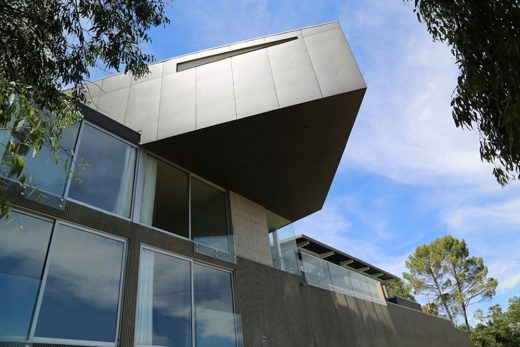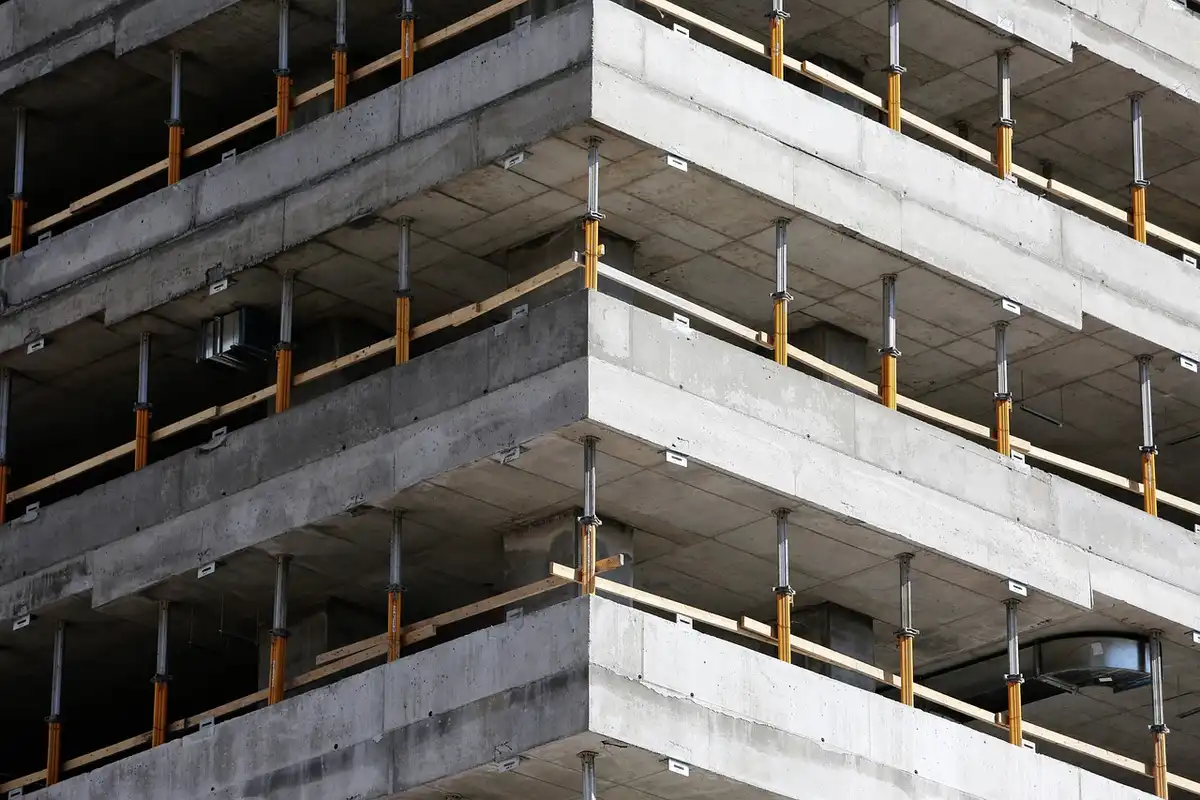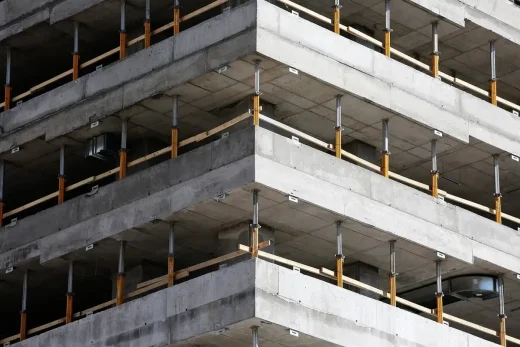Reinforcing concrete in architectural design methods, Building contractor, House build
Methods of Reinforcing Concrete in Architectural Design
24 October 2024
Concrete is a key material in architectural design due to its widespread use. While it is strong under compressive forces, it is weak in tension, which makes reinforcement crucial. To address this weakness, engineers use various reinforcement techniques, each designed to enhance the concrete’s performance and durability.
These methods improve the material’s ability to handle different stresses and contribute to the longevity and safety of structures. Understanding these reinforcement techniques is essential for achieving effective and resilient construction.
Ways to Create a Reinforced Concrete Structure
Engineers use various methods to reinforce concrete, each serves a specific purpose to reach particular goals. Here are some of the techniques used in the construction industry:
Reinforcing Concrete with Steel Bars
The most common way to strengthen concrete is by adding steel bars (rebars). This improves the concrete’s ability to handle pressure and provides support against stretching. Workers place steel rebars in specific patterns for structures like slabs or beams to ensure even load distribution.
Plastic rebar chairs and spacers are used to ensure that the reinforcing bars remain elevated and in place within the concrete. The use of rebar supports helps prevent shifting and protects against corrosion for improved structural integrity. We commonly use rebar reinforced concrete in the construction of skyscrapers, bridges, residential and commercial buildings.
Advantages:
- High strength in both tension and compression.
- Readily available and cost-effective.
- Compatible with various forms of concrete structures (concrete beams, slabs, columns).
Fiber-Reinforced Concrete
Fiber-reinforced concrete incorporates short fibers made of steel, glass, synthetic materials, or natural substances into the concrete mix. These fibers help distribute loads across the structure, making it more durable, flexible, and resistant to cracking. Fiber reinforcement is used in building materials for pavements, industrial floors and in areas exposed to seismic activity.
Advantages:
- Increases durability and crack resistance.
- Reduces the need for traditional steel reinforcement in some cases.
Textile-Reinforced Concrete
Textile-reinforced concrete involves adding textiles like carbon, glass, or basalt fibers into the concrete. These textiles make the concrete stronger and thinner while allowing for more flexible shapes. Textile-reinforced concrete is used for thin walls, architectural facades, and lightweight load-bearing parts.
Advantages:
- Enables thin, lightweight, and flexible structures.
- Resistant to corrosion and cracking.
Bamboo-Reinforced Concrete
Bamboo has been explored as an alternative to traditional steel reinforcement in concrete. We often use bamboo reinforcements in regions where steel is expensive or difficult to obtain. Bamboo is a strong and renewable construction material, making it a great choice for reinforcing concrete. This method is especially useful for affordable housing, temporary structures and eco-friendly construction projects.
Advantages:
- Environmentally friendly and renewable.
- Lightweight and easy to work with.
- Locally available in many parts of the world, reducing transportation costs.
Pre-Tensioned Concrete
Pre-tensioning involves stretching steel tendons or cables before pouring the concrete. We keep the tension while the concrete sets, which makes it stronger and better at handling stretching forces. As the concrete hardens with the tension still applied, it becomes even more resistant to stretching. After the concrete sets, we release the cables. We typically use this method for prefabricated concrete parts like beams, planks, and slabs.
Advantages:
- Greater control over tension and load distribution.
- Minimizes cracking under loads.
Post-Tensioned Concrete
Post-tensioning is a method where we place steel cables or tendons inside the concrete before it sets. After the concrete hardens, we tighten the cables to compress the concrete. This makes the concrete stronger and less likely to crack.
We commonly use post-tensioned concrete in the construction of parking garages and bridges. High-rise buildings with large open spaces and roofs that span long distances are also created with the help of post-tensioning.
Advantages:
- Reduced material usage due to higher efficiency in load-bearing.
- Allows for longer spans without the need for columns.
Advantages and Disadvantages of Reinforced Concrete
Reinforced concrete combines the strong, compressive strength of concrete with the stretchy strength of steel. This mix allows it to handle different types of stress, making it ideal for buildings, bridges, and highways. Its durability and fire resistance also makes it great for long-lasting construction. Plus, architects can shape it in many ways, offering design flexibility while maintaining structural strength.
Even though reinforced concrete has many benefits, it also has some drawbacks. A major issue is that it can crack due to shrinkage, temperature changes, or overloading, which can weaken the structure if not fixed. Steel reinforcement can also rust if exposed to moisture, reducing the concrete’s strength.
Installing reinforced concrete can be costly because of the complex process of setting up formwork, placing rebar, and curing the concrete. Additionally, making concrete has a big environmental impact due to its high carbon emissions.
While reinforced concrete has many benefits, like durability and design flexibility, it also has some challenges. Reinforced concrete buildings or structures can crack or experience steel corrosion. Despite these issues, reinforced concrete is still a key material in modern construction because of its strength and versatility.
Comments on this guide to Reinforcing concrete in architectural design methods article are welcome.
Luxury House Designs
Los Angeles Luxury House Designs – latest contemporary L.A. property additions on e-architect:
Design: A L M Project

photos : Patricia Parinejad, Michael Morris and Trevor Dixon
Mulholland Drive Annex, Southern California
Design: Whipple Russell Architects

photo : Simon Berlyn
Bundy Drive Residence
Concrete Construction
Construction Concrete
Mastering techniques for concrete structures
Enhance home curb appeal with custom concrete work
Benefits of Concrete in Construction
Quality Precast Concrete for Your Investment
Home Articles
Residential Architecture
Real Estate
Real Estate Posts
Should You Move Your Real Estate Investment To Canada
How to find and buy a suitable condo in Canada
Comments / photos for the Reinforcing concrete in architectural design methods page welcome.






